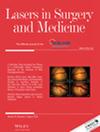The Efficacy and Safety of Synchronized Radiofrequency and High Intensity Facial Electrical Stimulation in Improving Facial Skin Laxity and Quality in Asians
Abstract
Background
Noninvasive aesthetic procedures for facial rejuvenation are gaining popularity. Conventional treatments, such as radiofrequency (RF) and high-intensity focused ultrasound (HIFU), primarily improve skin quality but do not address the deeper musculoaponeurotic structures that affect facial laxity. A novel approach that delivers synchronized RF with high intensity facial electrical stimulation (HIFES) thought to target both the skin and underlying musculoaponeurotic framework to effectively enhance facial laxity has been investigated.
Objective
To assess the long-term efficacy and safety of combined synchronous RF and HIFES therapies in treating facial skin laxity among Asian subjects.
Methods
In this prospective, evaluator-blinded study, 15 participants aged 40–65 years with mild to moderate facial skin laxity were enrolled. Each underwent four weekly treatments using a synchronized RF and HIFES system using noninvasive electrode applicators on the forehead and cheeks. Objective assessments included forehead and cheek lifting measurements using a 3D photographic system, eyebrow lifting measurement using ImageJ software, skin texture and melanin levels using Antera 3D®, and skin elasticity using Cutometer® MPA 580. Additionally, patients provided self-assessments regarding their perceived level of improvement. Assessments were conducted at baseline, before the 3rd treatment, and at 1 month, 3 months, and 6 months after the last treatment.
Results
All participants completed the study. Significant improvements were observed in forehead and cheek lifting sustained at 6 months (p < 0.0001). A significant eyebrow lift of 1.39 mm was observed at 3 months (p = 0.0087), with a sustained lifting distance of 1.31 mm at 6 months (p = 0.0021). Skin firmness improved substantially (p < 0.0001), with R0 (skin firmness) increasing by 81.24% at 6 months. Skin texture improved notably in the crow's feet area (13.82% improvement at 3 months, p = 0.049). Melanin levels decreased significantly in the crow's feet and forehead regions. Treatment was well tolerated, with pain scores decreasing from 3.5 ± 1.8 to 1.6 ± 1.0 by the fourth session. No serious adverse events occurred.
Conclusions
Combined synchronous RF and HIFES therapy is a safe and effective Noninvasive method of improving facial skin laxity and quality in Asian subjects. Lasers Surg. Med. 00:00–00, 2024. © 2024 Wiley Periodicals LLC.


 求助内容:
求助内容: 应助结果提醒方式:
应助结果提醒方式:


